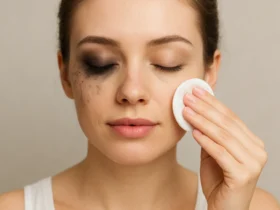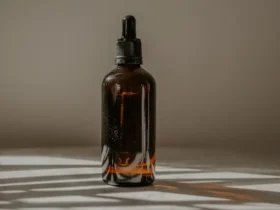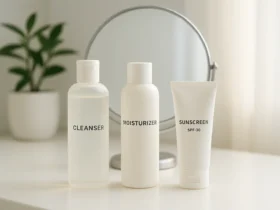Key Takeaways
- Chemical peels help manage acne and scarring effectively by exfoliating the skin.
- Different types of peels are available, each catering to various skin needs.
- While beneficial, chemical peels require careful consideration and professional guidance.
Table of Contents
- Introduction to Chemical Peels
- Types of Chemical Peels and Their Uses
- Benefits of Chemical Peels for Acne
- How Chemical Peels Address Scarring
- Why Many Opt for Chemical Peels
- Considering a Chemical Peel: What to Know
- Real-Life Stories of Skin Transformation
- Expert Insights and Recommendations
- Final Thoughts on Skin Transformation
Introduction to Chemical Peels
The allure of smooth, blemish-free skin is timeless, and for many, achieving this starts with a skin treatment that delivers promising results. Chemical peels stand out as a potent method in the arsenal of skin care solutions. Known for their ability to rejuvenate the skin by removing outer layers, they offer a new start to the skin, literally from the top down. Specifically, a chemical peel meticulously targets and transforms acne-prone skin.
This treatment utilizes a blend of acids that vary in concentration depending on the specific needs. The process initiates the removal of dead skin cells, promoting the generation of new cells. It targets visible skin issues and encourages internal skin rejuvenation, offering a comprehensive solution to those longing for lasting results.
Chemical peels have been used since ancient Egyptian times when milk containing lactic acid was used to enhance skin appearance. Over time, these methods have evolved significantly, with modern chemical peels formulated with scientifically proven ingredients like glycolic and salicylic acids. The efficacy of chemical peels lies in their ability to address various skin concerns, from hyperpigmentation to extensive acne.
Types of Chemical Peels and Their Uses
Chemical peels encompass a range of strengths and ingredients, each selected based on the skin’s unique requirements. Light peels usually use mild acids like alpha hydroxy acid to treat superficial skin conditions, providing a solution for those needing a quick fix for minor complexion issues. According to the American Academy of Dermatology, these treatments can help with mild acne, fine lines, and sun damage. Medium peels go deeper, addressing more significant skin issues. Ingredients like trichloroacetic acid or glycolic acid penetrate the skin more profoundly, offering enhanced results for more serious concerns like age spots and deeper lines. For those with pronounced skin imperfections, deep peels act as a more intensive treatment, affecting the middle layers to correct blemishes and scars. In cases where acne is more persistent, an acne chemical peel may be recommended to target clogged pores and reduce inflammation over time.
The choice of peel is contingent upon the individual’s skin type and goals, requiring a tailored approach to determine the most beneficial treatment plan. Light and medium peels can often be repeated at intervals to maintain and enhance results, while deep peels require a longer recovery period and are usually performed less frequently. However, the efficacy of these peels largely depends on the skill of the practitioner and the patient’s adherence to post-treatment care instructions.
Benefits of Chemical Peels for Acne
Tackling acne involves more than surface techniques; it demands strategies that address the roots and prevent future occurrences. Chemical peels serve as a strategy, effectively unclogging pores and warding off acne breakouts. By removing the top skin layers, a peel minimizes the oil and debris build-up often responsible for acne fluctuations. As highlighted in research journals, this method is a preventative measure against acne, addressing current and potential pimples.
For those burdened with regular breakouts, chemical peels offer a reprieve, providing clearer skin and a renewed sense of confidence. The benefits extend beyond treatment sessions as the skin rejuvenates over time, lessening the severity and frequency of future breakouts.
Dermatological research suggests that salicylic acid peels effectively reduce acne lesions and control sebum production. Salicylic acid, lipid-soluble, penetrates deep into the pores, exerting a potent anti-inflammatory effect. Clinical studies have also indicated that beta hydroxy acid peels can improve acne and particularly benefit those with oily skin types. However, it’s important to note that the results can vary based on the individual’s skin type, with some experiencing more pronounced improvements than others.
How Chemical Peels Address Scarring
Scars can persistently remind us of past acne battles or other skin traumas. Chemical peels are celebrated for tackling these reminders, providing a road to smoother, more even skin. Peeling away the upper skin layers stimulates new cell growth beneath, meaning old, scarred tissue is progressively replaced with new, healthy skin.
This gradual transformation is not only physical but also emotional; as the visibility of scars diminishes, so too can the self-consciousness and social anxiety associated with them. The change occurs over weeks and months, offering visible and measurable improvements in skin texture and tone, providing hope and confidence to many.
Dermatologists often recommend a series of medium-depth peels for improving the appearance of post-inflammatory hyperpigmentation and shallow scars. Studies have shown that glycolic acid peels, for instance, yield significant improvements in texture and pigmentation, especially when used over several sessions. Laser treatments are sometimes used with chemical peels to address deeper scars, demonstrating how multifaceted approaches can optimize results.
Why Many Opt for Chemical Peels
Chemical peels have become popular for many seeking skin rejuvenation and improvement. One primary reason is their versatility and ability to address various skin concerns, from acne and pigmentation to aging signs and dullness. Unlike other more invasive procedures, chemical peels offer a non-surgical option with minimal downtime, which appeals to those with busy lifestyles.
According to the Mayo Clinic, chemical peels enhance the skin’s texture and tone and stimulate collagen production. This makes them an attractive anti-aging treatment, reducing fine lines and improving skin elasticity. With an array of peel strengths and formulations, treatments can be customized to meet individual skin types and concerns, further enhancing their allure.
Moreover, the procedure’s affordability compared to other cosmetic treatments makes it accessible to a broader audience who seeks professional-grade intervention without exorbitant costs. Dermatologists and aesthetic practitioners often recommend chemical peels as part of a comprehensive skincare regimen to prolong and maintain skin health and vitality. This multifaceted approach leads to increasingly positive word-of-mouth referrals and consumer satisfaction, reinforcing their popularity.
Considering a Chemical Peel: What to Know
Embarking on the journey of skin transformation with a chemical peel requires careful thought and preparation. It’s vital to assess suitability for this treatment, as skin type, condition, and goals can influence outcomes. Consulting with a skincare professional is crucial, as they can provide personalized advice and explain what to expect during and after the procedure.
Potential risks and post-treatment care should be discussed to ensure a thorough understanding. Following professional guidance, individuals can mitigate temporary effects like redness or sensitivity, ensuring that the path to rejuvenation is smooth and beneficial in the long term.
It’s crucial to address the importance of pre-treatment preparation. Before peeling, patients should avoid exfoliating agents and potential irritants like retinoids and hair removal treatments. Sun exposure should be minimized, as it heightens the risk of photosensitivity and potential skin damage during recovery. Post-treatment care typically involves gentle cleansers, high SPF sunscreen, and hydrating creams to protect the newly exposed skin and optimize healing.
Real-Life Stories of Skin Transformation
The transformation journey with chemical peels comes to life through the countless personal stories of success. These testimonials highlight the significant impact on individuals’ lives, where even slight skin texture and health improvements drastically enhance confidence and self-esteem.
Individuals experiencing this transformation often share their stories, offering hope and encouragement to others. Whether through written narratives or before-and-after photos, these stories reflect the power of professional skincare in altering appearances and overall life experiences.
Expert Insights and Recommendations
Clinical experts and dermatologists unanimously agree on the potential benefits of chemical peels. Their insights stress a tailored approach, ensuring each treatment aligns with an individual’s unique skin profile. This bespoke treatment plan, guided by professionals, maximizes results while safeguarding against adverse effects.
Furthermore, this treatment should be integrated into a broader skincare regimen that includes regular hydration, protection from UV rays, and nutrition to support skin health. Experts emphasize that chemical peels can produce transformative and sustainable results combined with healthy lifestyle choices.
Renowned dermatologists also underline the importance of an incremental approach to peeling. Patients can gauge their skin’s tolerance and response by starting with lighter, more frequent peels before progressing to deeper peels. This method minimizes the risk of complications while maximizing the cumulative benefits of treatment.
Final Thoughts on Skin Transformation
Chemical peels offer a robust tool for those seeking skin renewal, especially those dealing with acne and scarring. While they may not be a universal solution due to varied individual skin needs, their potential and lasting results are worthy of consideration. The journey toward better skin is deeply personal and can profoundly impact one’s confidence and quality of life.
Those interested in undergoing chemical peels are encouraged to seek informed, professional advice to unlock this treatment’s full potential. Ultimately, empowered decisions lead to effective treatments, resulting in healthier, happier skin that reflects inner well-being and outer radiance.
Overall, chemical peels represent an evolving dermatology frontier, offering aesthetic improvements and a renewed sense of self. With continued advancements in formulations and techniques, these treatments promise to remain at the forefront of cosmetic skincare solutions for years to come.








Hello!! My name is Annabella
I love to eat, travel, and eat some more! I am married to the man of my dreams and have a beautiful little girl whose smiles can brighten anyone’s day!